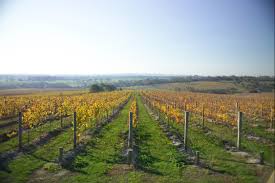Land subsidence is not a new topic of discussion in California. It has been a part of California’s agricultural history ever since farmers introduced large-scale wells to pump groundwater from the Central Valley’s aquifers. In a very interesting photo, USGS Scientist Dr. Joseph F. Poland stood next to a telephone pole near Mendota, CA in 1977 to show the effects of land subsidence on the valley floor. As you can see in the linked picture, he put signs on the telephone pole noting where the land would have been in 1925, 1955, and 1977. Dr. Poland’s analysis determined that the valley floor in that area fell approximately 8.93 meters (over 29 feet!) between 1925 and 1977 when he took that picture. Unfortunately, after a century of pumping in the Central Valley, little has yet changed to make the process more sustainable. Continue reading
Tag Archives: overdraft

City Slickers Come to California’s Central Coast:
Harvard’s Continuing Education in California Groundwater Rights
On January 22nd, Reuters posted an article “Harvard Buys Water Rights in Drought-Hit Wine Country.” An email flurry broke out with seemingly everyone in my contact list sharing a link. The article reported that the Harvard Endowment “has quietly become one of the biggest grape growers in California’s drought-stricken Paso Robles wine region, securing water well drilling permits to feed its vineyards days before lawmakers banned new pumping.” According to Reuters, a wholly-owned subsidiary of the $36 billion Harvard Endowment Fund has spent more than $60 million to acquire 10,000 acres in Santa Barbara County and San Luis Obispo County since 2012. Harvard’s entity now numbers among the top 20 wine growers in Paso Robles.
Reuters asks was Harvard’s move a “well-timed water play”? Is it? Nope. Instead, it is covering itself from investing in vineyards in a region with a rapidly increasing groundwater overdraft problem. Continue reading
